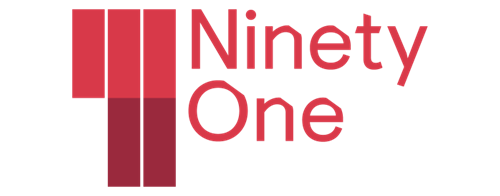Bianca Botes, Director at Citadel Global
United States (US) earnings season is when US companies report on how they have performed in the previous quarters. It gives investors insight into what factors are impacting corporate earnings performance and how to steer their investment decisions going forward. The second quarter US earnings season is concluding against a backdrop of economic volatility, tariff uncertainties and shifting consumer sentiment. Earnings reports from July through to August were remarkably strong, with companies largely exceeding market expectations.
This period saw the S&P 500 – which tracks the performance of 500 leading US companies listed on stock exchanges across the US – deliver blended earnings growth of 11.9% year-over-year, significantly surpassing the 4.8% anticipated at the end of the second quarter. Revenue growth stood at 6.1%, or 7.3% excluding the energy sector, reflecting broad-based corporate resilience despite US economic headwinds like inflation fears and trade policy concerns. With 98% of S&P 500 firms reporting by early September, 81% beat earnings estimates, and 60% topped revenue forecasts.
Overall, corporate America adapted well to the challenges facing the US economy, with efficiency gains and cost controls playing key roles in padding bottom lines. This trend of upside surprises has bolstered market confidence.
Sector breakdowns: tech leads, others show mixed fortunes
Second quarter sector performances varied widely, pointing to uneven growth patterns in the US economy. Technology emerged as the undisputed star, stealing the spotlight with robust growth driven by AI demand and digital transformation. The sector’s earnings surged, contributing heavily to the S&P 500’s overall pace, as firms capitalised on innovation amid economic pressures. Communication services followed suit, buoyed by strong results from media and telecom giants, while information technology and consumer discretionary sectors also posted gains, reflecting resilient consumer spending on essentials and experiences.
Other sectors also surprised to the upside. Financials kicked off the season strongly, with banks like JPMorgan Chase, Citigroup, and Wells Fargo reporting better-than-expected figures, lifting aggregate growth to 5.6% early on. Healthcare and consumer staples showed stability, with earnings holding steady amid inflationary pressures on input costs.
In contrast, energy and utilities faced headwinds. Pre-earnings previews indicated potential declines, with energy expected to drag due to volatile commodity prices and utilities grappling with regulatory shifts. Seven of the S&P 500’s 11 sectors were initially forecasted for cumulative earnings drops, including materials and industrials, impacted by supply chain disruptions and tariff threats.
Internationally-exposed sectors, however, benefitted from a weakening dollar, boosting overseas revenues, while domestic-focused areas like real estate navigated higher interest rates due to the US Federal Reserve (Fed) keeping rates steady.
Overall, the season’s sector dispersion underscored a two-speed economy: innovation-driven growth in tech versus cyclical challenges elsewhere.
Notable company highlights: wins and warnings
Individual corporate stories added colour to the aggregate data. Nvidia epitomised tech’s dominance, reporting a staggering 59% net income increase to $26.42 billion, or $1.08/share, fuelled by explosive demand for AI chips. This performance not only beat estimates but also reinforced the “Magnificent Seven” narrative. Although dispersion among these mega-caps was evident, some like Apple and Microsoft delivered solidly, while others faced scrutiny over the sustainability of their growth vectors. China’s online retail giant, Alibaba, with US exposure, saw its stock soar post-earnings, while semi-conductor company, Marvell, tumbled on weaker guidance, illustrating the hit-or-miss nature of tech subsectors.
Retail giants provided consumer health insights: Target’s second quarter results highlighted strong comparable sales growth, driven by value-focused strategies in a budget-conscious environment. Financials set a positive tone early, with capital markets revenues up 15% year-over-year, marking the best second quarter in five years despite uncertainty.
NIO, the electric vehicle maker, reported a wider-than-expected loss but sparked short-term rebound hopes through market reactions. Management commentary across calls was cautiously optimistic, with many citing tariff risks but emphasising adaptability through supply chain diversification.
In energy, ExxonMobil posted $5.4 billion in earnings, down $1.4 billion from the first quarter due to lower crude prices, yet still resilient amid geopolitical tensions.
Market impact: volatility meets optimism
Markets reacted positively overall, with the S&P 500 and tech heavy NASDAQ having climbed 5.0% and 4.5%, respectively, since the start of second quarter earnings reporting season. Volatility spiked early in the quarter amid Trump’s aggressive Liberation Day tariffs. Investor sentiment shifted from caution to relief as tariffs were rolled back. Euphoria was, however, tempered by cautious management statements. While 80% of firms exceeded expectations, forward outlooks remained muted.
Looking ahead: cautious growth on the horizon
If we look beyond the second quarter, the economic outlook appears steady. US gross domestic product (GDP) grew 3.3% annualised in the second quarter; a positive surprise, signalling resilience. We expect slower US growth in the second half of the year due to tariffs and key risks include inflation, policy shifts and consumer spending slowdowns. Analysts project third quarter earnings growth of 5.1%, with full-year 2025 estimates at 10.3%.
In conclusion, the second quarter of 2025’s earnings season defied the market’s low expectations, delivering robust growth led by tech and financials while navigating economic crosswinds. This performance not only stabilised markets but also set a foundation for measured optimism in the second half of the year. As uncertainties linger, investors will watch closely for sustained momentum.
TURNING TO THE MARKETS
Week’s key themes:
- Bond yields under pressure amid fiscal concerns and market jitters
- US equity markets mixed amid volatility and stagflation concerns
- Gold reaches new record highs on the back of geopolitical uncertainty and potential Fed rate cuts
- Oil falls 2% in the week, highlighting ongoing market sensitivities and global economic signals
- Dollar impacted by concerns over Fed independence
Bonds
The US Treasury market endured a volatile first week of September, with yields higher early on as investors weighed US fiscal concerns and economic data. The 10-year Treasury yield climbed to a high of 4.28% by 2 September, while the 30-year yield surged to 4.97%, reflecting broader market unease with long-dated bonds. Yields have since eased, with the 10-year settling around 4.15%. Sentiment remains cautious ahead of today’s key Non-Farm Payrolls data.
United Kingdom (UK) Gilts also experienced a sharp selloff, trading as high as 4.83% early in the week. UK fiscal worries and a weakening pound pushed long-dated yields to multi-decade highs. The 30-year Gilt yield spiked above 5.7%, its highest level since 1998. Yields have since fallen to levels marginally lower than Monday’s open.
German Bund yields initially traded high this week in tandem with other major developed market bonds before settling at levels marginally lower than Monday’s open. The German 10-year Bund is currently trading at 2.72% while the 30-year trades at 3.33%.
South African Government bonds saw modest yield increases this week, bucking a longer-term rally fuelled by declining inflation expectations. The 10-year yield rose to 9.65% by 4 September, while the 30-year climbed to around 10.79% amid global bond market jitters and local economic factors.
Equities
US equity markets started September with volatility amid stagflation concerns, along with tech-sector weakness. The S&P 500 fell more than 1%, while the Nasdaq fell nearly 2%. By mid-week, recovery had set in with the Nasdaq and S&P500 climbing 1% and 0.5%, respectively and up on last week’s closing levels. Tech heavyweights, Alphabet and Apple, delivered strong gains while energy stocks remained under pressure. Markets are somewhat tentative, awaiting today’s key payrolls data.
European equities are trading marginally below Monday’s open. Sentiment is steady as investors await today’s crucial US jobs data. The FTSE 100 Index traded above the weeks open while the DAX and other major European indices traded near or below their week’s opening levels.
South African equities faced downward pressure this week, mirroring global market jitters, with the JSE All Share Index falling 1.4% to 100,432 by Thursday. Gold shares bucked the trend as the gold price reached a new record high, breaching $3,500/ounce. In other news, Anglo American announced a complete sell-down of its remaining equity stake in Valterra Platinum (formerly Anglo American Platinum Group). This completes a major step in Anglo American’s restructuring.
Commodities
On 1 September, spot gold spiked to $3,484/ounce, marking its highest level since April. The rally continued through mid-week, with prices reaching around $3,593.20, driven by expectations of Fed rate cuts, geopolitical uncertainties and strong Exchange Traded Fund inflows. Notwithstanding a slight pullback from its peak, stagflation concerns persist. This performance underscored gold’s role as a safe haven asset, with potential volatility looming ahead of today’s US jobs data.
Brent crude oil prices trended lower throughout the week, reflecting anticipation around an upcoming expanded Organisation of the Petroleum Exporting Countries, OPEC+ meeting and broader demand concerns. It opened on Monday around $68.00/barrel before declining steadily. By 5 September, prices have fallen to approximately $66.80/barrel, marking a roughly 2% drop from the week’s start. The downward pressure highlighted ongoing market sensitivities to global economic signals.
Currencies
At the time of writing, the US Dollar Index was trading around 98.12, up slightly on the start of the week. The greenback is holding steady despite lingering concerns over Federal Reserve independence and jitters at the long end of the yield curve.
The EUR/USD exchange rate traded at $1.1670/€, down 0.18% from the previous week. Key US economic data and limited trade tariff news kept the pair range-bound for most of the week.
The pound sterling fell sharply at the start of the week, influenced by fiscal concerns and broader dollar dynamics. It recovered subsequently, recouping half of its losses as markets digested Bank of England policy signals and UK economic fragility.
The ZAR/USD exchange started the week on a strong footing, supported by the strong gold price performance. After trading as low as R17.55/$, the rand weakened to R17.72/$, down 0.42% from the previous week.
Please note that all information is at the time of writing.
Key indicators:
ZAR/USD: 17.72
ZAR/GBP: 23.85
ZAR/EUR: 20.67
Gold: $3,552
Brent Oil: $66.88
ENDS
























































































